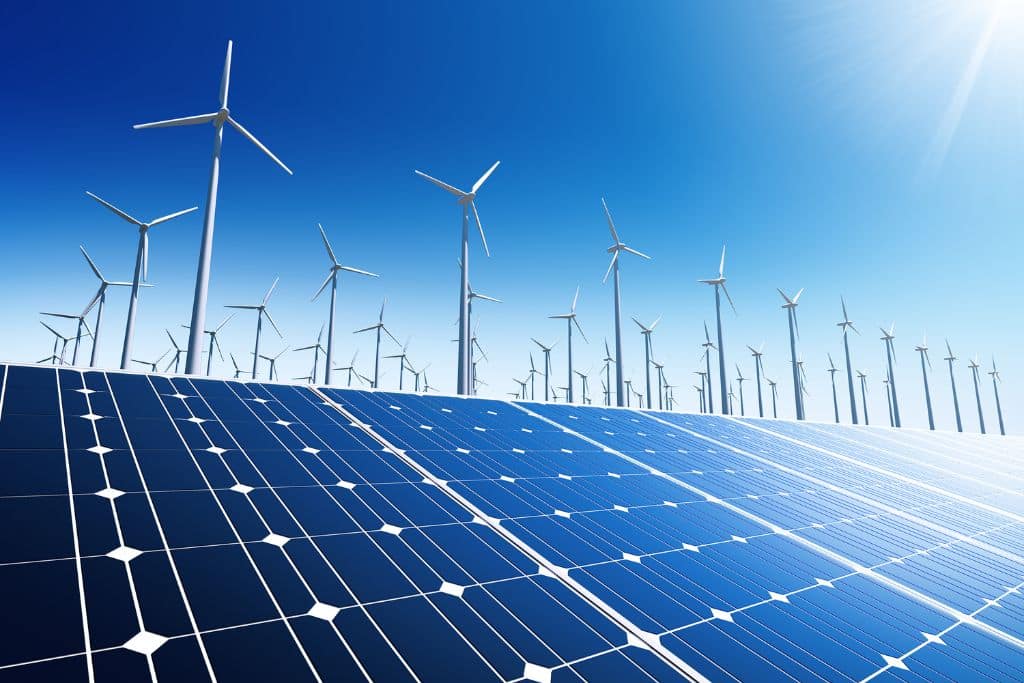As of 2024:
Fossil fuels (coal, gas, oil) accounted for nearly 60% of global electricity generation.
- Coal: ~ 35%
- Natural gas: ~ 22%
- Oil & other fossil: ~ 3%
Low-carbon sources (renewables + nuclear) made up about 40.9% of global generation in 2024.
- Renewables alone: ~ 32%
- Breakdown: Hydro ~14.3%, wind ~8.1%, solar ~6.9%, bio ~2.6%.
- Nuclear: ~ 9% in 2024.
The projection that solar generation will increase 3–6× by 2035” is plausible in the context of exponential growth trends.
Current data does support very rapid solar expansion: for example, solar generation doubled in three years (2021–2024), adding 474 TWh in 2024 alone. So, while the 3–6× figure is a bold projection, it’s more of a modeled scenario than a confirmed forecast in existing public data.
The shift away from fossil fuels is being driven by falling costs in established technologies; solar panels, wind turbines, and battery storage are all becoming cheaper and more efficient. In 2024, renewables and nuclear accounted for more than 80% of the increase in global electricity generation, according to IEA data. In 2024, renewables added 858 TWh, meeting 73% of the increase in global electricity demand.
Three Possible Transition Pathways
Here are likely scenarios based on modeling and expert analysis for how the energy transition could unfold:
- Green Optimistic Scenario : Rapid deployment of renewables + storage keeps warming near 1.9 °C.
- Delayed Transition: Slower clean-energy roll-out could push warming toward 2.4 °C, with serious risks.
- Global Unrest Scenario: Geopolitical instability, uneven policy adoption, and supply-chain disruption could derail the transition.
The Paris Agreement, reached in 2015, aims to limit global warming well below 2 °C above preindustrial levels. It’s a framework for countries to coordinate emissions reductions, balancing economic growth and environmental risk.
Even though renewables are critical for decarbonisation, not all countries are embracing them the same way. Some developed nations which built their economies on fossil fuels now push for a global energy shift.
Meanwhile, emerging economies like Kenya are investing in oil and coal to meet development needs, raising questions about fairness and sovereignty. Kenya has budgeted USD 12.9 million for the Turkana oil project in 2025/26 to advance field development and infrastructure. The government has laid out a USD 3.4 billion investment plan for oil infrastructure: pipelines, wells, storage to develop the South Lokichar basin.
Read Also: A SWOT Breakdown For Africa’s Solar
Kenya is offering incentives to oil and gas investors to encourage exploration and development. Kenya has invited bids for coal exploration in the Mui Basin, eastern Kenya, for use in cement, steel, and electricity generation. The proposed Lamu Coal Power Station (though controversial and not yet built) has been part of Kenya’s energy strategy.
Gas is likely to hang around as a “bridge” fuel: it’s more flexible than coal and already integrated into many power systems. Hydrogen, though promising, faces cost, infrastructure, and scalability challenges. It’s likely to play a role, but not as early or as large as many hope.
What’s Next
- If renewables (especially solar and wind) expand quickly, they could become the world’s dominant energy sources by 2035, supported by battery systems to handle variability.
- Electricity demand will likely keep rising with population and economic growth but if fossil fuels decline fast enough, total energy demand could fall.
- The speed and scale of this shift will determine whether we stay close to Paris targets or risk more severe climate disruption.



